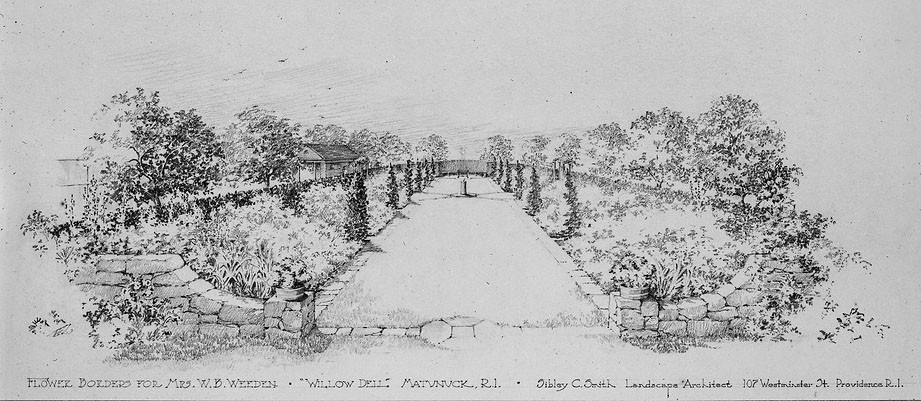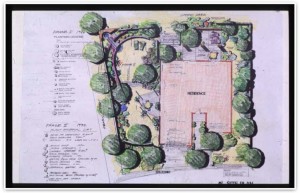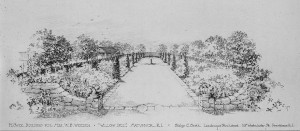
Design Your Own Garden
Now that you have learned about different types of gardens and how they are used, it is time to design your own special garden!
Lesson Information
At the end of this lesson, students will be able to:
- Learn units of measurement and conversions between measurement systems.
- Develop writing, drawing, and critical thinking skills.
- Communicate ideas to others visually and verbally.
- Understand how careers and jobs are connected to learning/education.
Recommended Grades: 9 – 12
Subjects:
- History
- Arts – visual arts
- Math – Measurements
- English – Communication & Language Skills
National Education Standards:
- Arts: NA-VA.K-4.1 Understanding and Applying Media, Techniques, and Processes; NA-VA.K-4.3 Choosing and Evaluating a Range of Subject Matter, Symbols, and Ideas; NA-VA.K-4.5 Reflecting Upon and Assessing the Characteristics and Merits of Their Work and the Work of Others; NA-VA.5-8.6 Making Connections Between Visual Arts and Other Disciplines
- Social Studies: NSS-C.5-8.5 Roles of the Citizen; NSS-G.K-12.2 Places and Regions; NSS-G.K-12.5 Environment and Society
- Mathematics: NM-MEA.3-5.1 Understand Measurable Attributes of Objects and the Units, Systems, and Processes of Measurements
- Language Arts: NL-ENG.K-12.4 Communication Skills; NL-ENG.K-12.11 Participating in Society; NL-ENG.K-12.12 Applying Language Skills
What you’ll need:
- Pencils or pens
- Colored pencils
- Thematic garden images and questions
- List of “Garden Terms”
- 18 x 24-inch or 8.5 x 11-inch graph paper
- Rulers
Getting Started: Designing Your Garden
1. Where will your garden be located? Some places you might consider: your backyard, a vacant lot, near your school, in a park, on a rooftop, etc.
2. Who will your garden be for? Things to consider: will it be your personal garden? A garden for a family member(s)? For your school? For pleasure? For your neighbors? For adults? For children?
3. Thinking about your response to question number 2, what kind of garden will you create? Will it be formal, with straight lines and paths, or will it have curves? Will you provide places for people to relax, eat, or play games? What themes will your garden incorporate?
4. What kinds of plants will you include in your garden? Will they be primarily for beauty or for food? Will they be native or exotic plants? Will your garden need plants that grow in the sun or shade? Moist soil or dry soil?
5. What other elements will be in your garden? Statues? Urns? Sculptures? Benches? Water features?
Telling Your Garden Story
After you have designed your garden, think about and respond to the following questions:
1. Imagine that a person fifty years from now has just found the plans for the garden you designed. What would you want this person to know about the garden and your reasons for creating it?
2. What location did you choose? Is the location important to your garden’s story? Why or why not?
3. Describe your garden’s design. Why does it look the way it does, according to you? (Remember, you are the expert on your garden!)
4. What kinds of plants or trees did you choose? How are they important to your garden?
5. What other elements did you choose to include in your garden? Why are they important to your garden’s story
Plan View
To create designs, architects and landscape architects use two different methods of drawing: plan and perspective. A plan view or “bird’s eye” view is drawn as if you are looking down on the space directly from above. It is used to define the shape and size of a garden, as well as the overall arrangement of plants and other garden elements in relation to one another. The image below is one example of a plan view. Can you identify the different elements (such as trees, buildings, and walls) in this bird’s eye view?

Hawkins Garden, Phoenix, Arizona. Steve Martino, photographer.
Garden Club of America Collection, Archives of American Gardens, Smithsonian Institution.
Perspective View
In contrast, a perspective view is drawn using techniques that make it seem as if you are experiencing the space in three dimensions and gives impressions of the garden from particular views. How is the drawing below different from the one above?

Willow Dell, Matunuck, Rhode Island, c.1910-1920.
Thomas Warren Sears Collection, Archives of American Gardens, Smithsonian Institution.
Plan View and Perspective View
Do you see the difference? Which photograph is a plan view, and which is a perspective view? Which photograph is more helpful in understanding how the garden is designed?
